Schütte: varieties, causes of appearance and methods of struggle
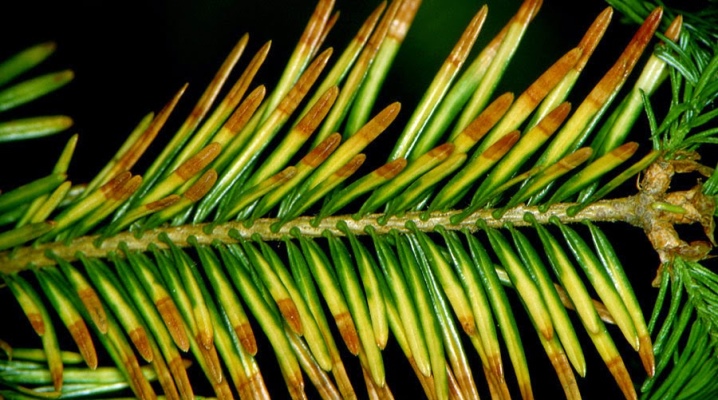
Lovers of conifers are definitely familiar with the word shyute. It sounds very nice, but it denotes a rather dangerous disease of coniferous trees. Let's take a closer look at the types of shute, the reasons for its appearance, as well as methods of struggle.
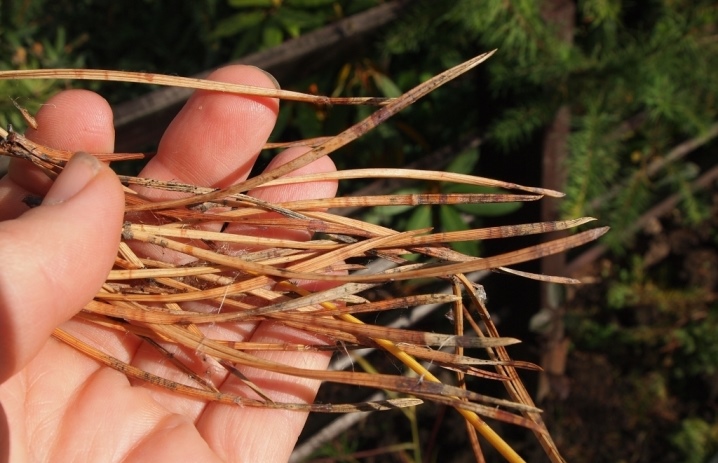
Description
Schütte is a fairly well-known disease that occurs among conifers. Ascomycetes act as its causative agent. Literally schütten is translated from German as "pour". With this disease, the color of the needles changes, then it dies off and crumbles. This disease is presented in several varieties, but they all occur with high humidity. You should be especially attentive to coniferous beauties during prolonged rains in order to recognize the disease at the very beginning of development, then it will be easier to deal with it.
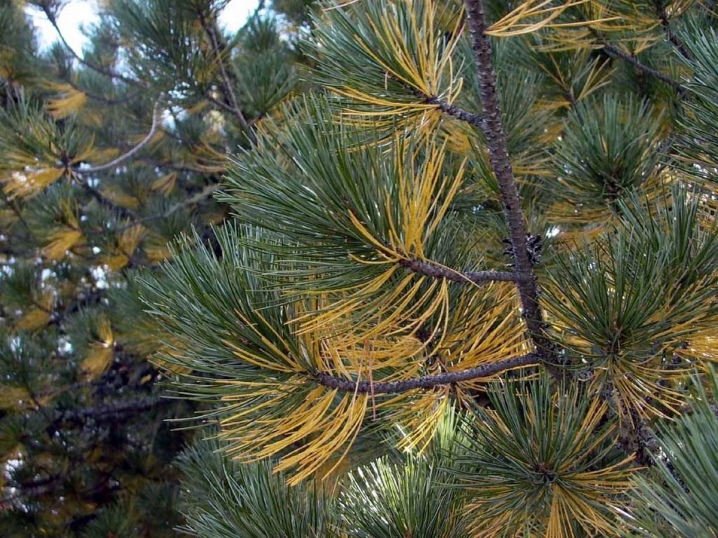
Important! Quite often, shute is found in conifers of 2 and 3 years of age. Although mature trees can be severely damaged by this disease.
Views
This disease is presented in several varieties. Let's take a closer look at the most famous forms.
The present
Usually, signs of this form of the disease are noticeable already in early spring. Initially, a slightly noticeable plaque appears on the needles of trees, but over time it acquires a brown color. Further, the needles begin to fall off profusely, and if you do not take quick control measures, the tree may die. Already in the fall, closer to winter, black apothecia begin to form on the needles, both fallen and those that are still on the tree. It is they that become a shelter for the pathogen shute for the winter, and in the spring it will be able to further infect trees.
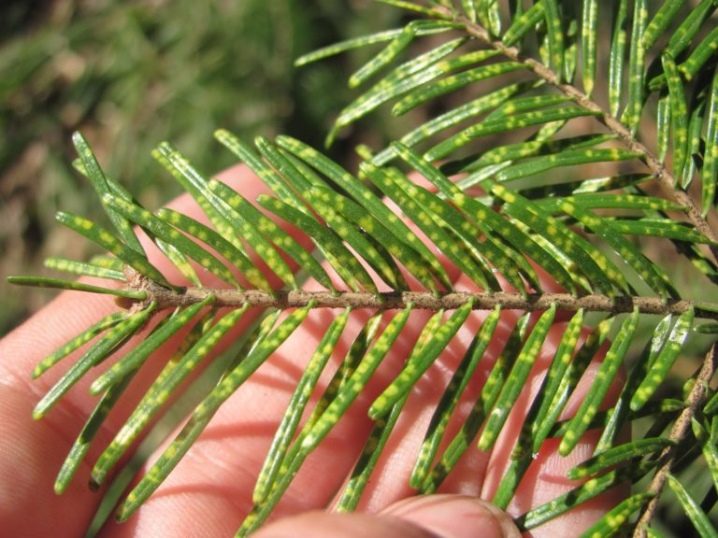
Ordinary
This variety is commonly found in pine and spruce.
- Ordinary pine shute. This disease is accompanied by the fact that the needles begin to turn red, after which they become all covered with black stripes. This usually occurs either in late spring or autumn. The peculiarity of an ordinary shute is that the affected spruce needles do not fall off immediately, and can still sag until next spring. But the pathogen can be seen at the end of summer. Apothecia usually have a body length of up to 2 mm, while its shape resembles an oval. Since the pathogen is small, nearby trees can easily become infected.
- Ordinary shute ate. Usually spruce gets sick in spring (April or May). Initially, the needles acquire a yellow or brown hue and begin to fall off over time. Already at the end of summer, black elongated formations appear on the needles - these are the causative agents of the disease. They have a body length of up to 3.5 mm. In such formations, spores can overwinter perfectly in order to re-infest the surrounding trees. Particular attention should be paid to young spruce trees and self-seeding.

Brown
Conifers such as spruce, cedar, fir, juniper and pine usually suffer from brown shute. The first signs of damage are already noticeable in March – April, although initially the tree becomes ill in the fall. The causative agent is the fungus Herpotrichia nigra, which appears even under the snow. When the snow begins to melt, the needles already have a brownish-black coating. As a result, dead needles are added to the plaque and do not fall off for a long time. Already in September, black perithecia are formed on the needles - the bodies of the mushrooms are jug-shaped or rounded with a narrow opening located at the very top.
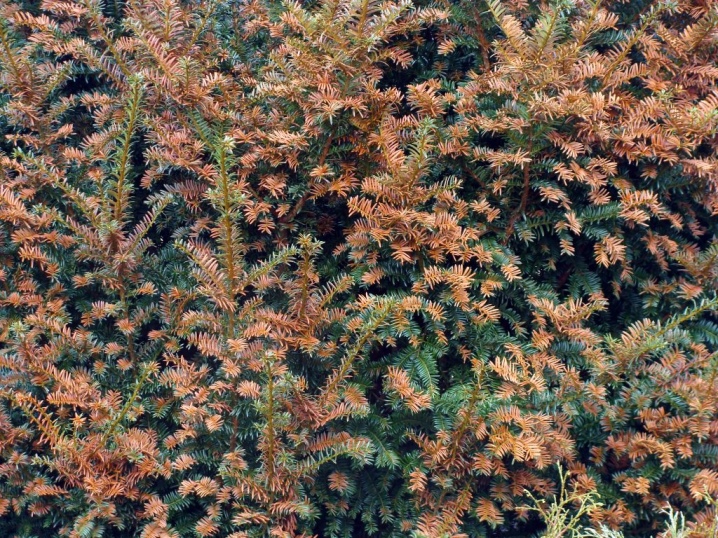
Snow
This type of shute received such an unusual name, since usually the development of the fungus occurs at temperatures below 0 degrees. Usually this variety is found on those trees that germinate in an area where the height of the snow cover is at least 50 cm. After the snow melts, a gray coating remains on the needles. After that, the needles become red, and then gray. The appearance of dark potencies indicates the location of the causative agents of the disease. After summer, the needles acquire a white-ash hue, begin to crumble, but do not fall off for a long time.

Consider a few more species that are found in certain species of conifers.
- Pine. The fungus Hypodermella sulcigena infects pine trees. The needles acquire a gray coating. Infection usually occurs in early summer. Initially, the infected needles turn yellow, and then - gray. Usually, the affected part of the needles is separated from a healthy strip of a brownish-purple hue.
- Larch. This tree suffers from both Hypodermella laricis and Meria laricis. Usually young trees, which are only 1-2 years old, are affected by the fungus. The onset of the disease can be seen as early as May. Initially, the needles are covered with red-brown spots, then they grow and merge together, forming a brown plaque. Even with the slightest breeze, the needles fall off. On the inside of them, conidia are formed, which are white dots - these are asexual spores.
- Fir and juniper. The needles of trees acquire a brown or dirty yellow color. Usually, the first signs appear in early June, with last year's needles first suffering. Closer to autumn, black round dots are formed on the needles, which contain spores of the fungus, which is the causative agent of the disease.
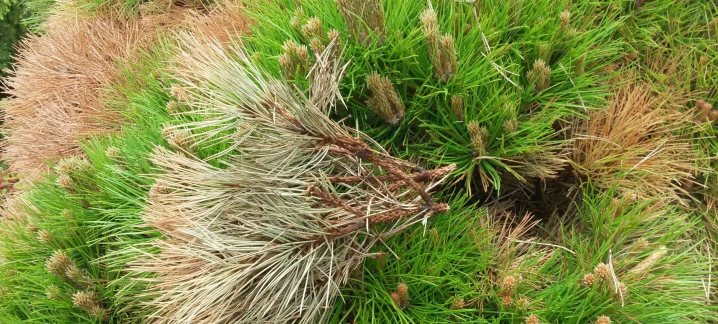
Treatment
So that you do not initially have to treat conifers from shute, you need to try to avoid conditions which lead to its appearance, namely:
- it is worth planting conifers on flat areas;
- trees must be protected from the wind;
- it is better to give preference to sandy soil over clayey, as it has a higher moisture content, which leads to the growth of fungi.
An excellent prevention is clearing the area from fallen needles, and it should be done every year.
But if the trees are still struck by the fungus, then with a properly carried out complex of measures, this disease is cured. Use Bordeaux liquid for spraying. An excellent solution would be an aqueous suspension of zineb or sulfur. An aqueous solution of nitrophene will allow you to cope with larch shute. For the treatment of Siberian cedar and thuja, a fungicide is suitable. Treatment should be carried out twice: in the second half of summer and 20 days after the first treatment.
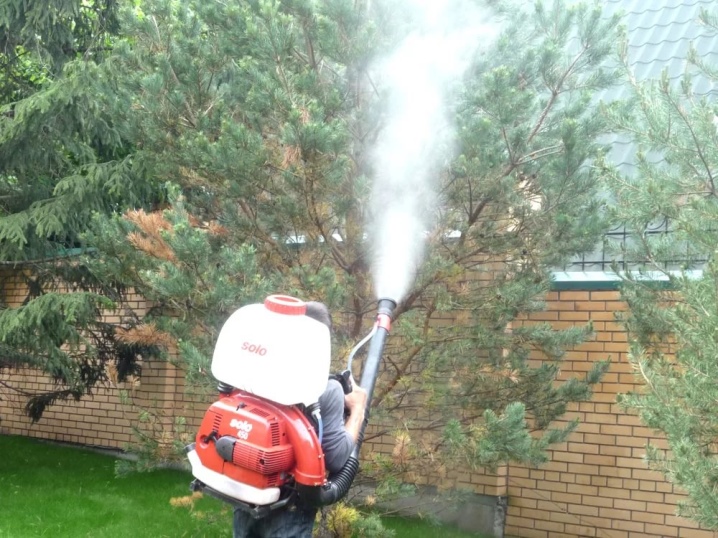
For information on what diseases are in conifers, see the next video.



































































The comment was sent successfully.